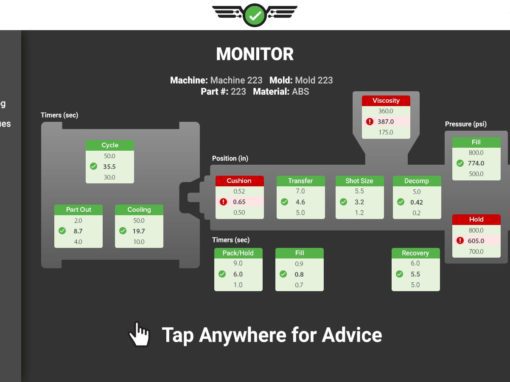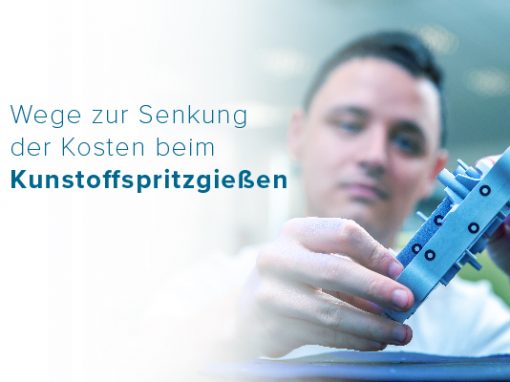High Performance Moulding
Course Description
- The candidate will be introduced to melt preparation by the selection of correct processing parameters for the type and grade of thermoplastics material being processed during this course.
- The candidate will understand the importance and technologies related to effective mould temperature control and its relevance to productivity and part quality/dimensional control.
- The candidate will understand the importance of effective part removal and its relevance to productivity and part quality/dimensional control.
- The candidate will be introduced to the concepts and methods of achieving the most consistent and economic process cycle for injection moulded components.
- The candidate will be introduced to pressure/temperature transducer technology.
- The candidate will use RJG’s PRO-OP™ software during the optimisation exercises.
Course Highlights
- General Health and Safety
- Melt preparation and plasticization overview covering
- Throat/barrel temperature selection
- Screw back pressure/decompression
- Screw surface speed
- Calculation of shot capacity and its relevance to homogeneity
- Consideration of cycle time with reference to shot/barrel capacity
- Calculation of plasticizing/injection rates
- Drying capability
- Carry out melt preparation exercise
- Systematic optimisation of elements of the moulding process
- Filling and packing of mould cavities
- Cooling of molten material within cavities
- Ejection/component removal
- Clamping force
- Carry out optimisation exercise
- Complete optimisation exercise and review results and findings
- Consideration of mould temperature control
- Mould tool circuitries – series and parallel
- Component temperature measurement
- Performance of mould temperature controller
- Output requirements
- Pressure requirements
- Circuitry and connector sizes
- Performance evaluation
- Commence optimisation exercise
- Complete optimisation exercise and review results and findings
- Consideration of component removal
- Use of transducer technology
- Commence practical experiment
- Course round up – Questions and Answers
Course Prerequisites
None
| Start Date | End Date | Name | Sprache | Ort | Open Seats | Preise | |
|---|---|---|---|---|---|---|---|
| 2026/03/09 | 2026/03/12 | High Performance Moulding | Englisch | Peterborough, Cambridgeshire | 5+ | £1,825.00 | Register |
| 2026/06/01 | 2026/06/04 | High Performance Moulding | Englisch | Peterborough, Cambridgeshire | 5+ | £1,825.00 | Register |
| 2026/09/21 | 2026/09/24 | High Performance Moulding | Englisch | Peterborough, Cambridgeshire | 5+ | £1,825.00 | Register |
| 2026/12/07 | 2026/12/10 | High Performance Moulding | Englisch | Peterborough, Cambridgeshire | 5+ | £1,825.00 | Register |

